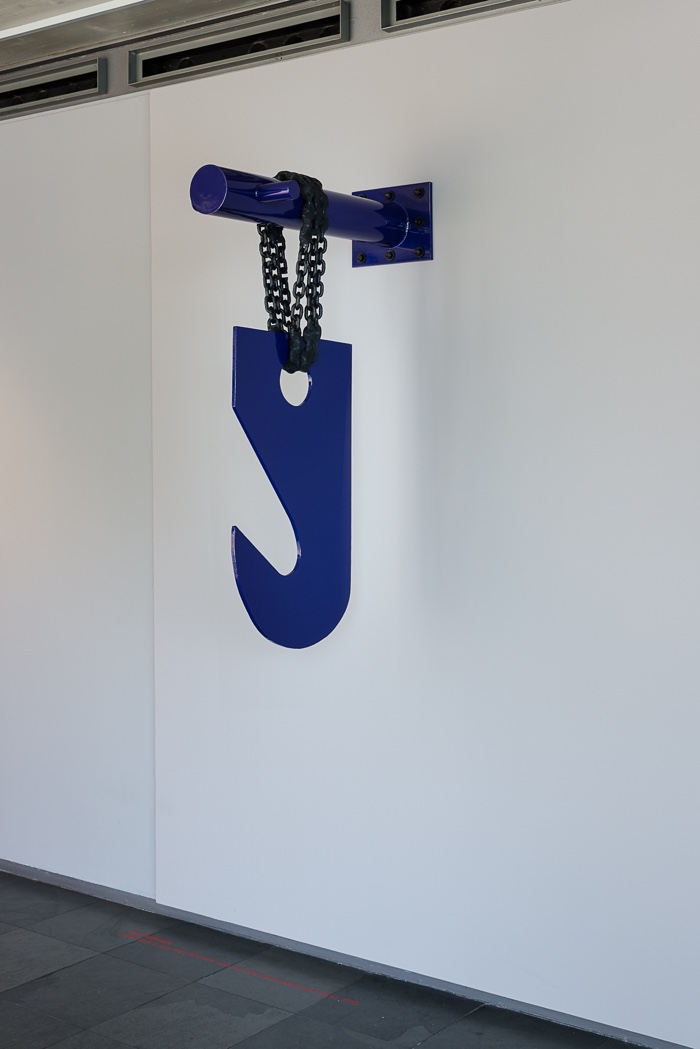
Toni Schmale, hafenperle II, from the series: fuhrpark. was das/der neue gefährt sein kann, 2013. Installation view: Work it, feel it!, Kunsthalle Wien 2017, Photo: Jorit Aust
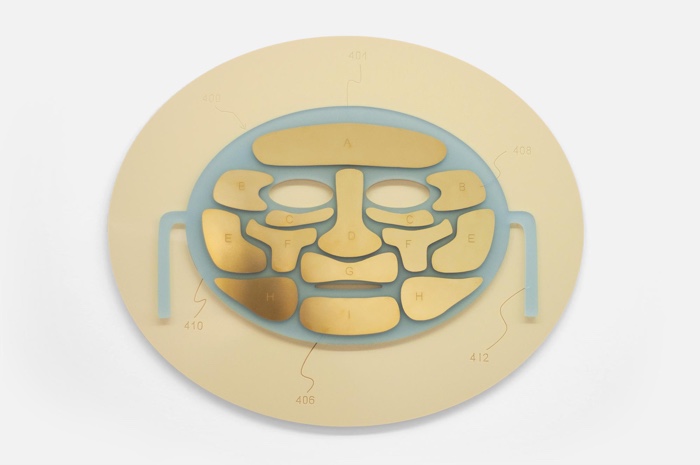
Juliette Goiffon and Charles Beauté, Face mask, 2016
Article 24 of the United Nations Declaration of Human Rights declares that Everyone has the right to rest and leisure, including reasonable limitation of working hours and periodic holidays with pay.
But does this still hold true? What remains of the values and achievement labour movements have fought so hard for since the Industrial Revolution? The growth of the service industry, of automation and of the white collar workforce liberated our bodies from the most physically exhausting exertions but does that mean that we feel a sense of body relief and comfort?
It turns out that, from a physiological point of view, sedentary activity is putting new strains and burdens on our bodies. News reports calling sitting ‘the new smoking’ abound. Employers are now increasingly responding to employees’ stress, loss of motivation, back problems and sick leaves with corporate wellness programs. Some offer wearable activity trackers to make work more fun, improve workers’ health, boost employee productivity or save money on health insurance costs. Others grant free gym membership. Or bananas.
As for rest and leisure, anyone with an internet connection is painfully aware that ‘urgent’ work emails, itches to update social media status and message from clients and colleagues are quietly nibbling away at our leisure time. Furthermore, the growing use of zero-hour contracts in the low wage sectors of the service and digital economy is imposing a new time discipline where the worker, informed often at short notice if their efforts are required, remains constantly on alert. Fortunately, we can still retreat in sleep. We might have less and less of it nowadays but it remains the last territory that capitalism hasn’t directly and completely conquered. Yet.
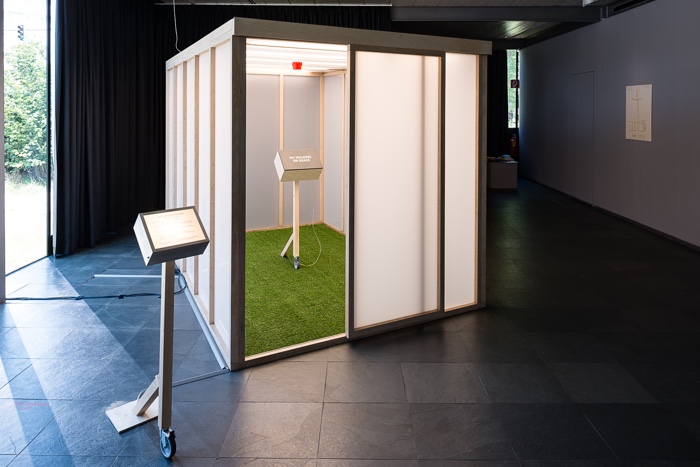
Visible Solutions, Clarity, 2010. Installation view: Work it, feel it!, Kunsthalle Wien 2017. Photo: Jorit Aust
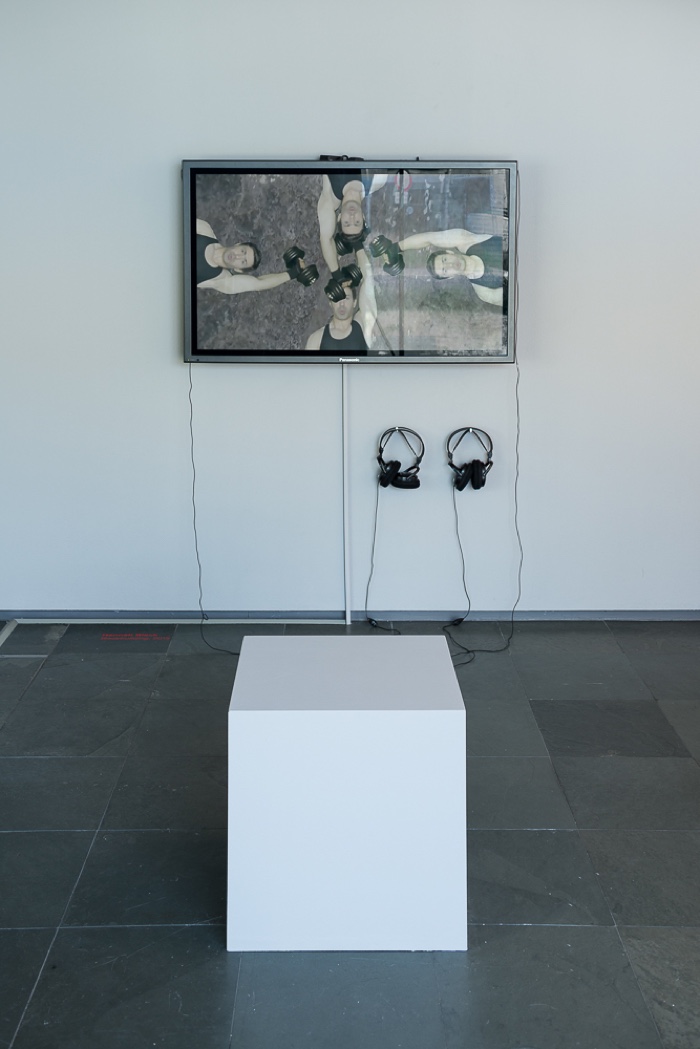
Hannah Black, Bodybuilding, 2015. Installation view: Work it, feel it!, Kunsthalle Wien 2017. Photo: Jorit Aust
Hannah Black, Bodybuilding (excerpt, 2m46s), 2015
A new exhibition at Kunsthalle Wien is looking at the work of the future and the future of work. The show focuses particularly on the increasing demands that work is placing on our physiology and how these demands are met with (conscious or not) moments of bodily resistance. Bearing the energetic title Work it, feel it!, the show is part of the Vienna Biennale for art, design, and architecture which theme this year is Robots. Work. Our Future. The various exhibitions in the biennale explore innovation, speculation and the future. With a bit of scifi and a bit of healthy imagination. Work it, feel it! stands out from the other curatorial perspectives by taking a more critical, more oblique yet very pertinent approach that scales the theme back to the body of the worker. And while the show zooms in on the disciplining of the human body, it never loses sight of the broader picture and issues: the capitalist organization of work and its impact on all aspects of our life.
The exhibition focuses on the demands placed on the human body and its possibilities to act, as seen against the backdrop of an increasingly automated workplace. What are the mechanisms of discipline and control that have been applied to the mind, and above all to the body, to make it an efficient production tool and a pillar of consumerism?.
Work it, feel it! explores the role of artists in this context. Not only did artists pioneer new working models based on flexibility, freelancing and precariousness, they also constantly question systems of control, redefine spaces for agency and present possible alternatives and escape routes to this implacable drive for productivity that has become the ‘new normal.’
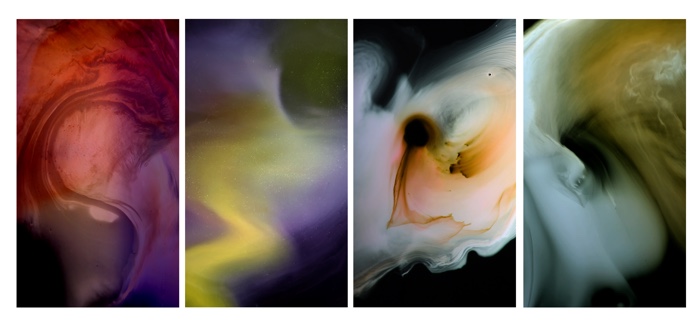
Danilo Correale, No More Sleep No More, 2014/16
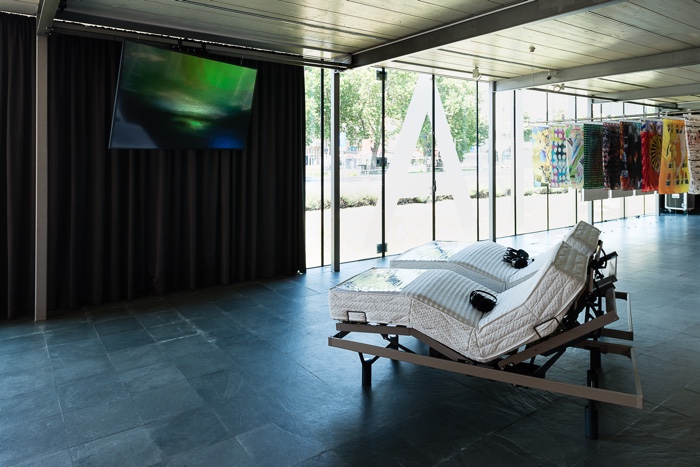
Danilo Correale, No More Sleep No More, 2014/16. Installation view: Work it, feel it!, Kunsthalle Wien 2017. Photo: Jorit Aust
Danilo Correale, No More Sleep No More (intro)
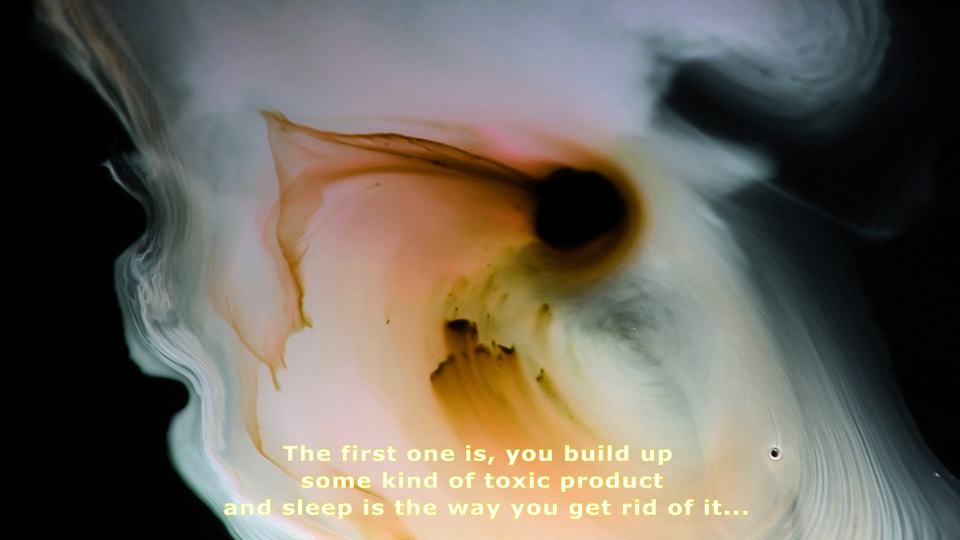
Danilo Correale, No More Sleep No More (still), 2015
The most thought-provoking work in the show for me was No More Sleep No More, Danilo Correale‘s compelling essay on the chronopolitics of sleep and wakefulness in postmodernity.
In 2014, Correale started a series of conversations with various experts on sleep: doctor David M. Rapoport, anthropologist Matthew J. Wolf-Meyer, historian Roger Ekirch, sociologist Simon Williams, labour studies scholar Alan Derickson, geographer Murray Melbin, philosopher Alexei Penzin and feminist scholar Reena Patel.
The interview part of Correale’s installation is a 4 hour long study of the tensions between the unyielding urge to be productive and the impact that sleeplessness has on productivity but also on social life as well as physical and mental health.
I didn’t get to hear everything but the whole research behind the work is so fascinating that i’ve just ordered the book! While i was in Vienna, however, I did get to listen to Roger Ekirch. The historian believes that industrial capitalism’s relentless need for productivity has shaped our sleeping habits. Not only did we sleep more in the past but we also used to divide our sleep into two shifts. Then came the Industrial Revolution in Europe and stricter, less intuitive sleep/wake schedules were imposed on the workers.
No More Sleep No More suggests a very near future when productivity will not only encroach on every waking hour of the day, as it already does, but will also take control over our sleeping cycles.
As an ironic and somewhat cruel comment on the dictates of neo-liberal capitalism over our sleep patterns, the installation features a dreamy, scifi screening of hypnotizing moving fluids to be experienced, not sitting on the traditional gallery bench, but reclining on the most comfortable bed i’ve ever tried in my life.
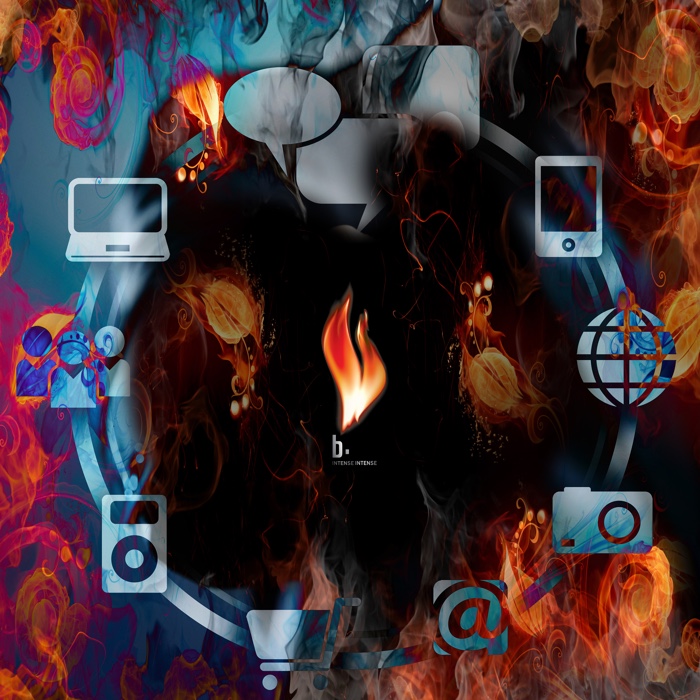
Danilo Correale, Boosted (detail), 2014
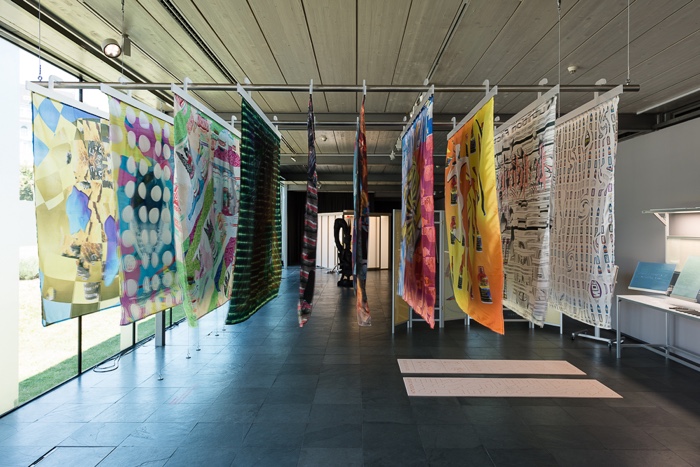
Danilo Correale, Boosted, 2014. Installation view: Work it, feel it!, Kunsthalle Wien 2017. Photo: Jorit Aust
Correale also explored alertness and the hyper-productive body through a series of silk scarves which patterns are inspired by the aggressive language of advertisements for energy drinks and invigorating ‘superfoods’. The fairly recent explosion in the energy drink & food market seems to respond and sustain the capitalistic call for 24/7 ebullience. According to its rhetoric, rest is a waste of time, aspiring to it is seen as some kind of moral flaw, a socially unacceptable blemish on productivity.
One of the scarves was covered in weapon patterns, implying that the future of our performances might not lay in maca and Red Bull but somewhere in the U.S. military’s ongoing sleep-reduction research program.
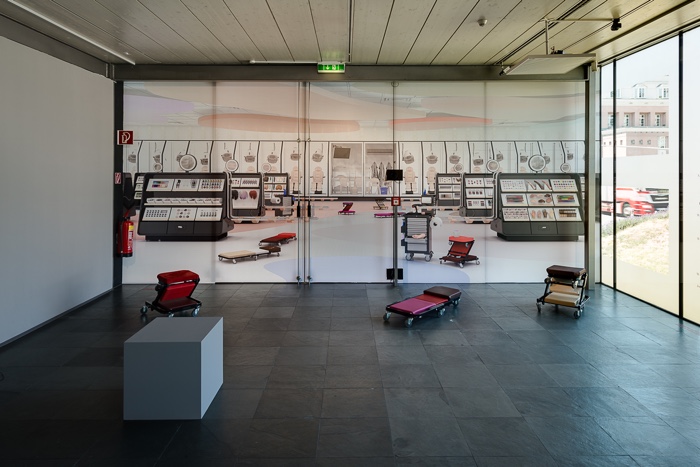
Shawn Maximo, Creeper Comforts (Specialty Multi), 2017. Installation view: Work it, feel it!, Kunsthalle Wien 2017. Photo: Jorit Aust
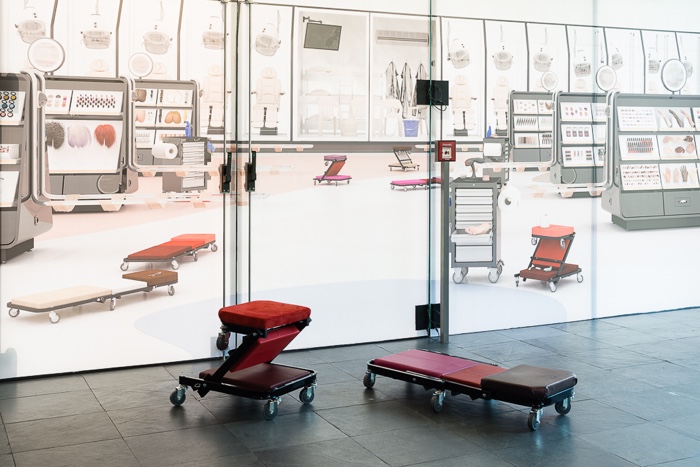
Shawn Maximo, Creeper Comforts (Specialty Multi), 2017. Installation view: Work it, feel it!, Kunsthalle Wien 2017. Photo: Jorit Aust
At the back of the exhibition space is Shawn Maximo’s futuristic beauty store. It looks familiar, like a Sephora of the future, only that along with the usual eye shadow palettes and myriads of lipstick shades, you find body parts. Various shapes of butts, colours of eyeballs, hands in all possible skin tone hues, etc. The cosmetic store specializes in the optimisation of the appearances of both humans and robots.
We already know that in the future, human bodies in need of enhancement will have access to affordable biofabricated flesh, 3D printing prosthesis and other customizable body parts. Maybe in the future we will all be like Aimee Mullins, the double-amputee model and Paralympian, who collects set of legs and sees in each of them the possibility to acquire new powers, new function and a new identity. How about self-conscious robots? Maybe they will be as free (or as constrained) as we are to change their appearance in a bid to look fit, attractive, modern and ready to comply with any new work requirement.
Which made me wonder: will we want to look more like a super powerful and sleek piece of robotics in the future? Or will the robots strive to look slightly flawed and more ‘natural’?
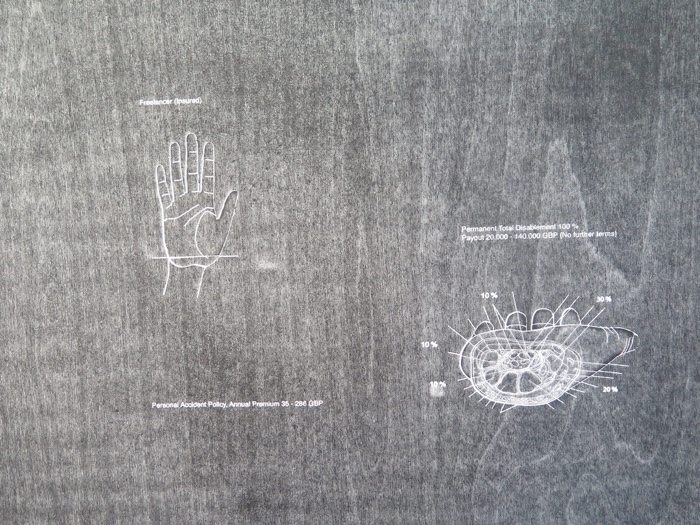
Sidsel Meineche Hansen, The Manual Labour Series (detail), 2013
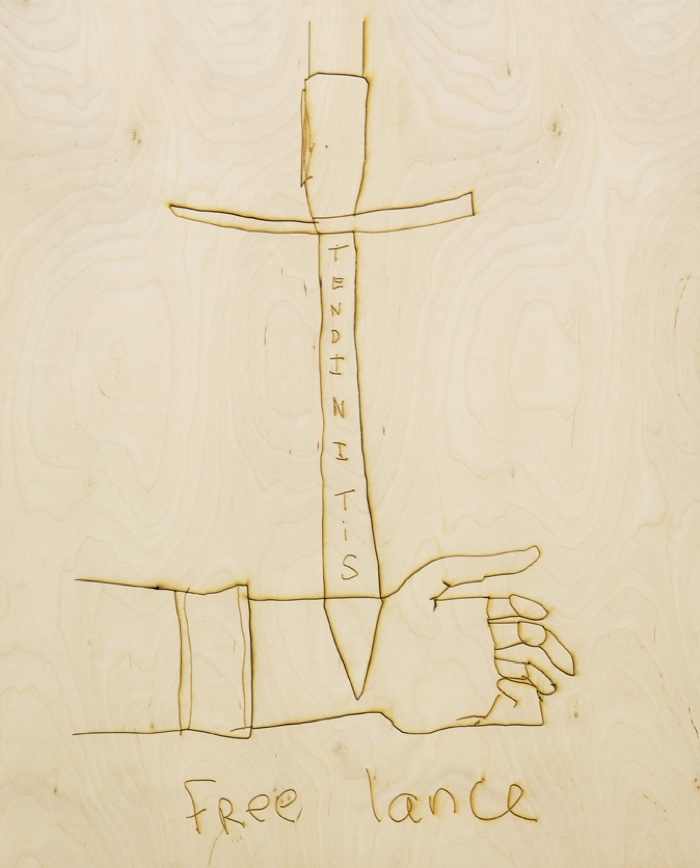
Sidsel Meineche Hansen, The Manual Labour Series, 2013
Sidsel Meineche Hansen’s Manual Labour Series questions the hierarchy between manual labour and cognitive labour forms. The series, consisting of five woodcut prints and a laser-cut wooden plate, depicts the human autonomic nervous system (that’s the control system that acts largely unconsciously and regulates functions such as the heart rate, digestion, pupillary response, urination, etc.) as well as hands injured by repetitive strain and affected by tendinitis.
To make the print series, the artist appropriated Edvard Munch’s woodcut printing technique and digitalised it by converting her handmade drawings into illustrator files, which were then laser-cut into the surface of the wood she used for the printing. The veins of the wood emphasize the craft, but also suggest a depiction of psychic spaces.
Depression, stress or nervousness are often interpreted as the collateral damages of our time and pressures at work. But what if they are signs (if not to say symptoms) of a resistance of the body—against its commodification and its exploitation by capitalism? The logic of profit strains the most intimate parts and particles of our bodies, from our emotions and our desires down to the tendons of our fingers. Everything can potentially create value, nothing escapes commodification. The whole body is mobilised and absorbed by this logic and the invasive technologies that support it. Sidsel Meineche Hansen’s work addresses the psychological and physical consequences of late capitalism, on a micro- and macro-political level, at home and at work, and seeks to locate points of resistance.
More images and works from the show:
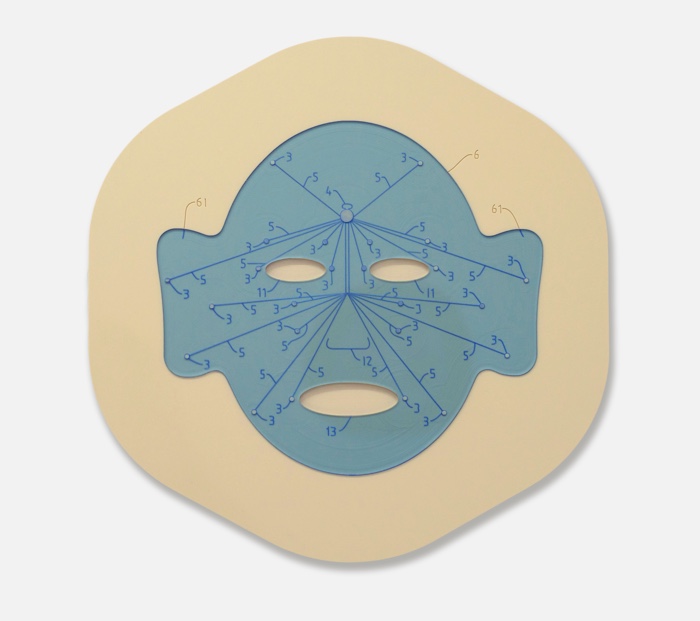
Juliette Goiffon and Charles Beauté, Face mask #1, 2016
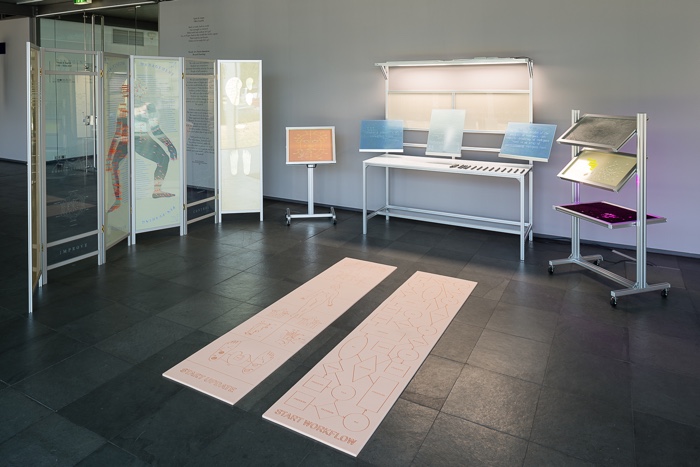
Juliette Goiffon and Charles Beauté, Upgrade (overall equipment), 2017. Installation view: Work it, feel it!, Kunsthalle Wien 2017, Photo: Jorit Aust

Installation view: Work it, feel it!, Kunsthalle Wien 2017. Photo: Jorit Aust
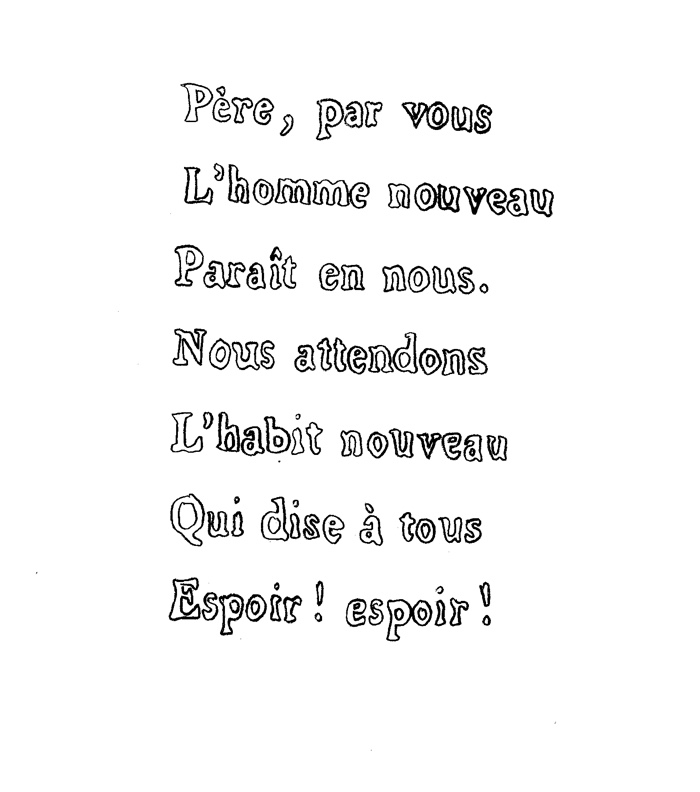
Louise Hervé and Chloe Maillet, Prosper Enfantins Performances, 2009
Work it, feel it!, curated by Anne Faucheret and associate curator Eva Meran, remains open at Kunsthalle Wien (Karlsplatz location) until 10 September 2017.
The exhibition is part of the Vienna Biennale for art, design, and architecture.
